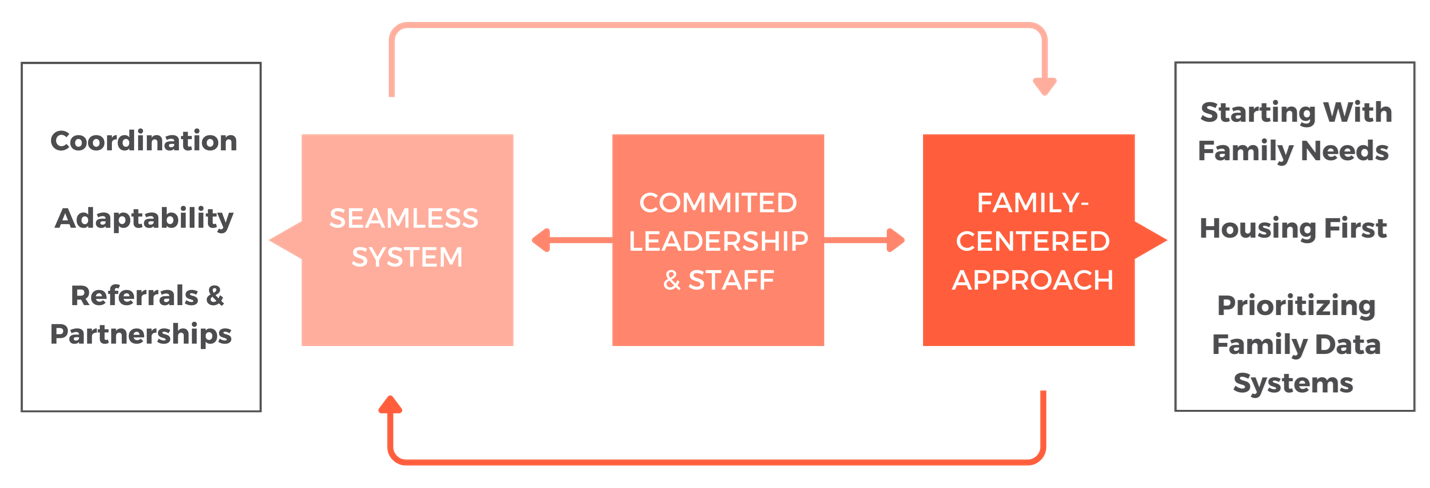Using Temporary Assistance for Needy Families (TANF) Funds to Address Housing Instability in New Jersey
Since 1998, a small number of states have used Temporary Assistance for Needy Families (TANF) block grant funding to help benefit recipients afford their housing. In 2013, the U.S. Department of Health and Human Services, Administration for Children and Families (ACF) issued a memorandum that directly encouraged states to adopt this approach. The memorandum highlighted New Jersey’s Mercer County as a best practice example. Many of these programs are county-administered, but what helps individual counties enable families to get housing stability using TANF funds? In the past couple of years researchers looked at New Jersey’s TANF-funded Emergency Assistance (EA) program and found that coordination, commitment, and a family focus among service providers have made significant impacts at the county level.
The Emergency Assistance Program
The New Jersey Emergency Assistance program helps support families with their shelter costs who are homeless or at risk of homelessness. One part of the program, Temporary Rental Assistance (TRA), provides families with assistance for moving into and staying in rental units from emergency housing. A 2023 report from MDRC, a nonpartisan education and social policy research organization, found that just three of 21 New Jersey counties were responsible for the majority of moves from emergency housing to Temporary Rental Assistance. The authors added that these counties had higher rates of these moves than other counties, meaning that even though the counties had larger homeless populations, they had more moves relative to their homeless populations. They also found that families went from emergency housing to Temporary Rental Assistance more quickly in these three counties.
Quantitative models designed to explain the differences did not yield insights into why these three counties used Temporary Rental Assistance more. Thus, another team designed a qualitative study to explore potential reasons.
What Made the Program Work Well
From their in-depth interview-based study, these researchers found that the three counties all had closely connected networks of services providers (including government and non-profit workers), that these providers approached Emergency Assistance not as a program to implement but as a component of family-centered case management, and that the service providers involved were strongly committed to the mission of keeping families out of homelessness.
A Seamless System
When all the service providers in a county were closely connected, one interviewee described the county as having a “seamless system.” Such a system was characterized by the close coordination between government and non-profit workers. As another interviewee described, coordination did not simply mean “information sharing,” but instead when service providers could work closely with one another to, for example, figure out what referrals might benefit a given family or figure out how the program could be updated or better implemented to improve families’ outcomes.
A Family-Centered Approach
Another feature of these three counties was that workers in both the government and in non-profits approached the program as one more tool to help families meet their housing needs rather than as a program aimed at achieving certain metrics. When workers focused on data, they were using their data to figure out why families might fall through the cracks and not keep up with the program. One county used their data systems to find that many families were having trouble bringing in required documents, so they changed their outreach to these families when it came to document provision. This process reflects how the counties’ family-centered approaches, including using data to meet family needs, fed into the seamless systems where people who implement the programs have the flexibility to adjust Emergency Assistance administration.
Committed Leadership and Staff
Having staff, including leadership, dedicated to keeping families from homelessness enhanced the value of having both a seamless system and a family-centered approach to service provision. One interviewee noted that this commitment was more important than a county having additional resources like more staff members. An interviewee working at the state level mentioned that not all people involved in implementing the Emergency Assistance program see “helping people [as] their primary job.” A county-level government case worker explained that they try not to “just go straight to deny” families. Instead, they focused on finding the best solution to each families’ individual needs.
Fitting These Components Together
These three main components of the Emergency Assistance program in these counties–having committed leadership and staff, a seamless system, and a family-centered approach–acted to reinforce one another. First, the commitment of workers fed into both the connectivity of the service providers with one another and those providers’ approach to their work from a family-focused perspective. When workers saw it as their job to really help people, they started with the people before the program. As these staff members encountered families with different needs, they knew which other programs might help and had the contacts to give families smooth referrals. These referrals enhanced the coordination between service providers, which then helped them prioritize family needs. The following graphic shows how this system worked to reinforce itself.

Policy Implications
This study highlights the value of having strong-knit networks of service providers at the county level who are committed to helping homeless families gain stable housing in ways that prioritize individual family needs. The study also suggests that programs like Emergency Assistance might fare better when they are introduced in counties that already have these features. Thus, policymakers should work on ways to encourage coordination, commitment, and a family focus among service providers.
This work was supported by the Family Self-Sufficiency and Stability Research Network, Grant Number 90PE0043 from the Office of Planning, Research and Evaluation, Administration for Children and Families, U.S. Department of Health and Human Services.
Read more in Sophia Fox-Dichter, Vee Yeo, and Andrea Hetling, “Community Networks with a Family Focus: Success Factors in Implementing a TANF Funded Housing Support Program.” Journal of Social Service Research, (2023): 1-15.
